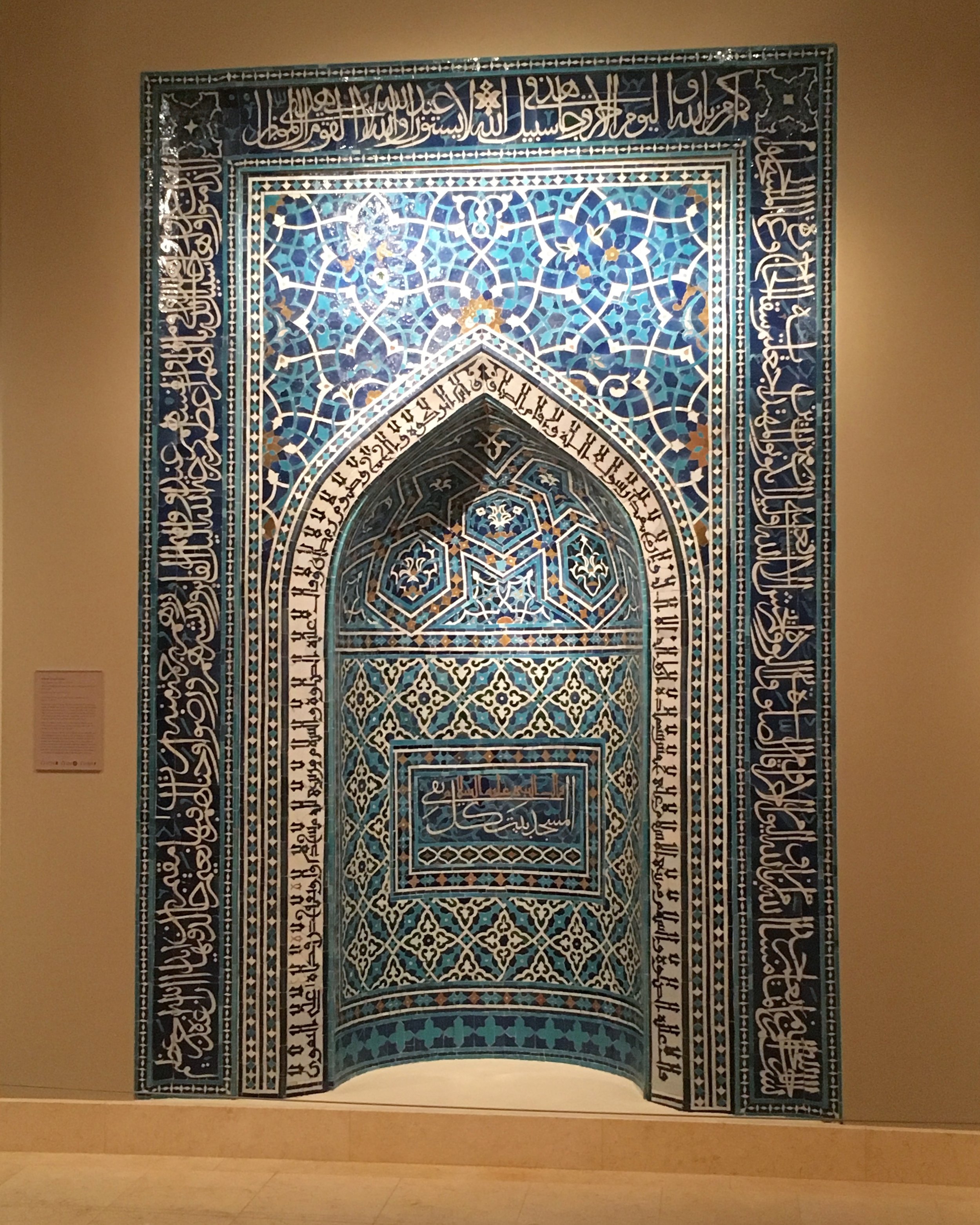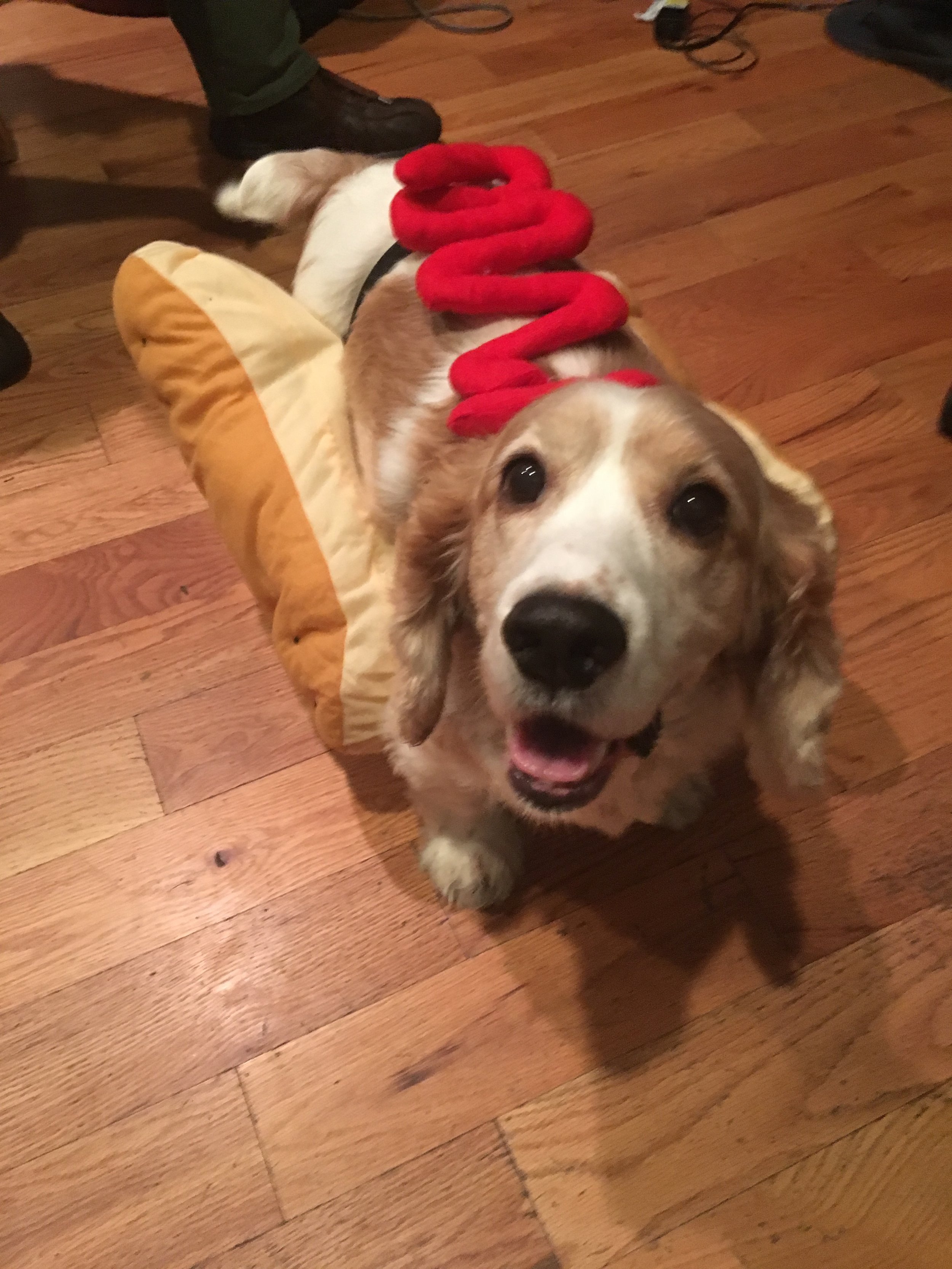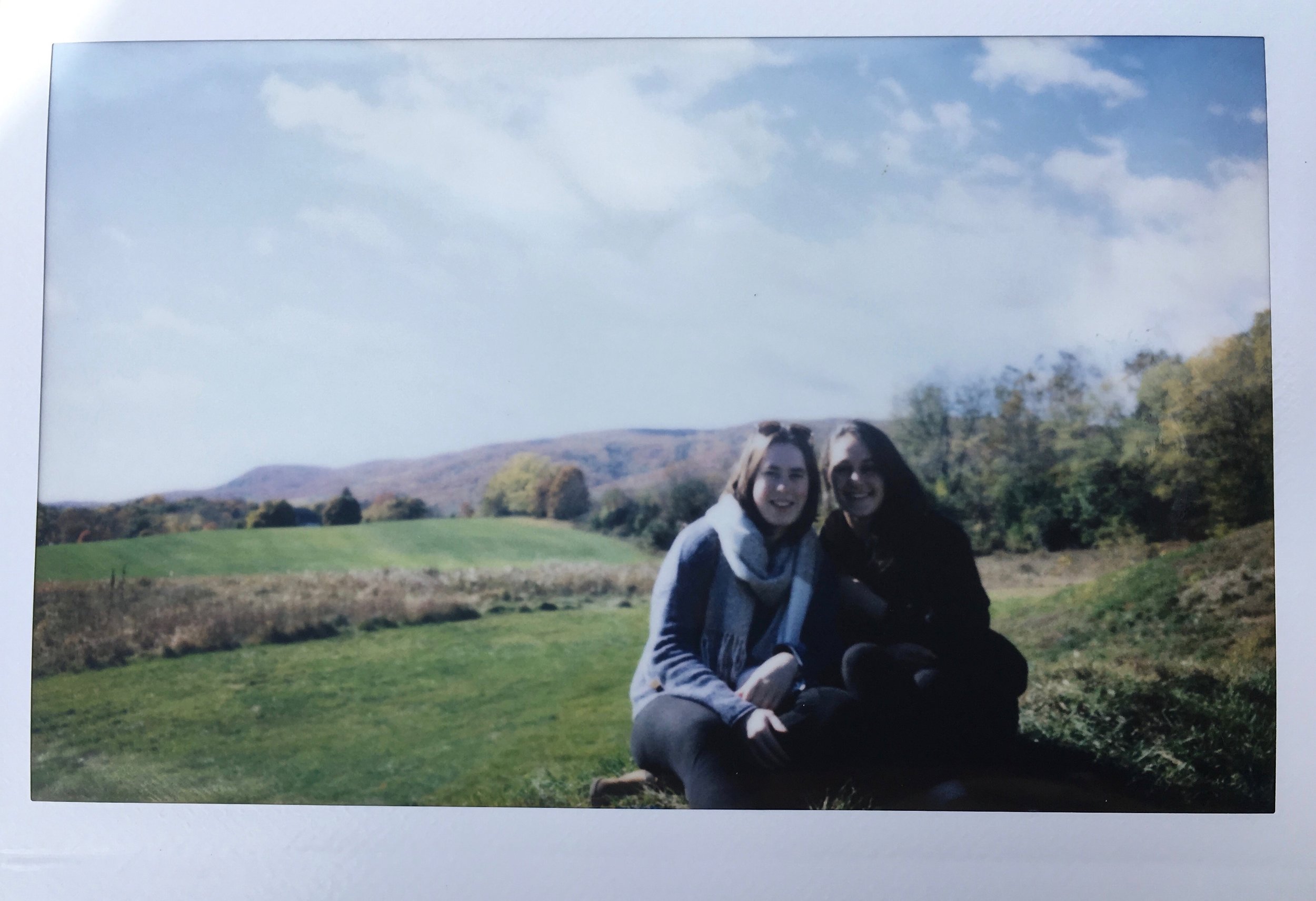Pop-up Ballet, Canoeing the Gowanus Canal, and More: A Look Back at October
October has been a month of exploration. Most of my expeditions have been for "spot assignments" for my traditional reporting class. While we have long-form assignments throughout the semester (in the style of literary journalism) we also do one-off pieces, coming to class with fresh reporting... and one hour to write the piece.
The first assignment was to attend an event and write a brief "Talk of the Town" style piece of cultural commentary. The second was to infiltrate a New York subculture. The third, due soon, will be to profile a dead or dying business (New Yorkers know the crushing disappointment when a beloved deli, coffee shop, or laundromat closes.) Read on for a taste of reporting life.
A Night at the Ballet...In Bushwick
While throngs of eager young art-goers pressed into cramped artists’ studios off of Cypress and Flushing Avenues in Bushwick —with sweating cans of event-sponsored Pabst Blue Ribbon in hand — a quiet marriage of ballet and color theory was taking place only twenty minutes away.
Located in a wide-windowed, well-lit building on Cook Street, the contemporary fine art gallery Odetta staged a one-night inter-disciplinary performance of ballet and visual art, offering a quiet take on the annual tradition of Bushwick’s Open Studios.
The premier of choreographer Julia Gleich’s ballet, “a white room,” was co-sponsored by Odetta and Norte Maar, a non-profit founded by well-known Bushwick art guru Jason Andrew. The ballet also accompanied gallery artist Debra Ramsey’s site-specific installation, “Hue[s]pace.”
“Hue[s]pace” displays four seasons of colors, represented on thick strips of painted paper spilled across three low, wooden tables. Between the first and second tables, a serene column of painted ribbons hung from the ceiling. The work is largely horizontal and parallel to the ground, save for the one arresting vertical line. Ramsey’s colors are warm, restrained, and matte, favoring earthy reds, oranges, and greens. As the only objects in an otherwise white, bare room, these strips of color stood out, yet did not command attention.
On this misty Saturday evening, a small crowd of about thirty on-lookers had gathered for the ballet. Promptly at 7:00, Odetta gallery director Ellen Hackl Fagan introduced the concept behind the ballet and invited guests to linger afterwards and admire Ramsey’s work.
Quickly, three dancers — Kara Chan, Tiffany Mangulabman, and Isabella Szylinska —appeared from the far back of the gallery. Dressed in simple gray and black outfits, they presented a monochromatic contrast to Ramsey’s color palette.
Though each performed quick solo movements, the three dancers intertwined and interacted with one another throughout most of the brief performance. Alternating between elongation and contraction, their bodies took on the shapes that Ramsey had constructed, the lines in the choreography echoing the folds in the painted strips of ribbon that tumble, unfurl, and fall through space.
Speaking after the ballet, Norte Maar director Jason Andrew explained more about the relationship between Ramsey and Gleich. The two artists exchanged images and notes throughout the process, and Gleich choreographed the ballet to suit Ramsey’s existing body of work and artistic sensibilities. Andrew also described Ramsey’s color sensibility as neither opaque nor subdued. In fact, her choices are highly technical and digital.
As Ramsey described it, she selected her colors systematically, rather than impressionistically, undertaking her process with precision and intent. It was clear that she viewed the installation in concrete, not emotional, terms. The tagline on her business card reads, “an idiosyncratic engagement with rule-based systems to make art.”
Ramsey began by returning to the same hiking trail over the four seasons. She took 18 photos on each hike, one photo for every 100 steps. After a year, she compiled the photos and chose one color from each photograph—either the most unique color, or the most ubiquitous.
Ramsey ran those selected colors through a translation program that outputs a paint formula. Once she had the color metrics, she began to paint her ribbons and arrange them in order of the seasons. Accordingly, from left to right in the gallery, the blocks are arranged as spring, summer, fall, and winter.
When asked why she chose to elevate summer in the vertical ribbon column, rather than leave it on the low level like the other seasons, Ramsey said it was purely a design choice to add visual interest. While viewers might be tempted to think of summer as ascendant or supreme, it seems Ramsey does not place such value judgments.
Ramsey’s process is certainly unusual and intriguing. But, since her technical process was obscured from the viewer, the intention and painstaking detail in the piece was lost in translation. The ballet did illuminate the physical attributes of “Hue[s]pace,” but it was unable to convey her rigid methodology.
In that sense, the dancers lifted up the visual art, bringing movement and life into an otherwise calculated endeavor. Similarly, Ramsey’s precision fits with ballet’s control of the body and emphasis on clean lines. This joint presentation masked the particularities of each discipline, lending grace and an appearance of effortlessness to both works. [check out a video here!]
Canoeing the Gowanus Canal: An Evening with The Dredgers
“Ahoy, welcome to the Gowanus Canal.”
That’s a phrase I’ll hear many times on this Saturday night, as the October harvest moon gradually rises over a motley crew of canoes cutting through the oil slicked channel. When I told friends that I would be paddling on the Gowanus Canal, by my own free volition, many an eyebrow was raised. “Don’t fall in,” I was warned.
The Gowanus is a 1.8 mile strip of water connecting Upper New York Bay with Brooklyn. It is also one of the most polluted waterways in the nation. Decades of industrialization have dumped chemical and industrial waste into the canal, while improper sewage treatment has diverted wastewater, and inadequate rainwater collection systems unleash a torrent of trash after every storm.
The canal is home to heavy metals, pesticides, bacteria like E. Coli, raw sewage, and a monstrous, ten-foot thick layer of trash somewhat affectionately dubbed “black mayonnaise” that rests at the bottom. The canal’s smell is familiar and inescapable— brackish and vaguely salty, like a receding low tide.
Having been designated a Superfund site— a source of intense local contention— in 2010, the Gowanus has received federal funding for a cleanup that will cost approximately $500 million.
Owen captaining his canoe.
Needless to say, Gowanus Canal’s reputation is amusingly notorious at best, ecologically apocalyptic at worst. A dedicated group of people— wielding paddles, not picket signs— is trying to change that.
Owen Foote, founder and organizer of the Gowanus Dredgers Canoe Club, says, perhaps referring to an infamously grim incident from April 2014, “if you want pleasant things to happen, stop talking about dead bodies and negative things, start talking about positive things.”
The Dredgers, a 501 c3 nonprofit, have been operational since 1999 and after 16 years, is still going strong, with 1000 members. Membership includes unlimited equipment access, but anyone can participate in Dredgers events or schedule a voyage. The club is active from May to October, and offers “open-paddle” nights on Wednesdays and Saturdays.
It is easy to forget that Brooklyn is a part of an island, Owen says. City life in New York is largely removed from the waterways that once defined commerce and transportation. The Dredgers are in the not-so-profitable businesses of neighborhood revitalization from the ground (or in this case, water) up. If you bring more people to the waterfront, more people will be passionate about preserving it, Owen says.
Cheers, Gowanus Canal.
After some initial chatter and the buckling of life-vests, we slip off the shore and into the canal just after 5:30. My canoe partner, a chipper landscape architect named Cecil, captains the front. She paddles with grace and ease, while I sit at the rear of the boat and attempt to steer without splashing too much canal water onto myself.
Behind us, Owen paddles solo. As is his custom, he greets passerby or gawkers with a friendly, yet slightly sardonic, “ahoy, welcome to the Gowanus Canal.”
A third canoe joins us downstream. Eymund Driegal— an environmental planner, Dredger member, and Gowanus hydrology expert— and Andrea Parker, executive director of the Gowanus Canal Conservancy, are co-captaining, and also coordinating with a group of artists on shore.
You see, not only am I cautiously canoeing what I have been told is one of the most disgusting bodies of water in the country— I’m doing it during Gowanus Open Studios, a night when a flotilla of reclaimed “trash-art” will sail down the canal.
It would be charitable to call these art pieces true “boats,” but they are sea-worthy. Some are traditional, with makeshift sails, sleek designs, and glimmering candles or Christmas lights. Other vessels take the form of “everything but the kitchen sink,” made with Styrofoam, old ski boots, tin-foil, balloons, colored paper, or— a crowd favorite—Ken and Barbie dolls (life vests included) sitting on a bed of fake one-hundred dollar bills.
The idea is to repurpose discarded or useless objects and question the notion of art, but also to highlight one of the biggest problems the canal faces—the inevitable barrage of trash that washes into the canal after a heavy rain.
A crowd gathers on a bridge overlooking the Gowanus art flotilla.
In this vein, Owen and Andrea make several short speeches throughout the night, tossing off nuggets of sustainability activism to the crowd. Try not to shower, do laundry, or run the dishwasher when it rains, Owen says. That way, you can prevent the waterlines from becoming overtaxed, and exacerbating the sewage and trash problem.
We spend about an hour testing the floatation abilities of the art-boat hybrids. Beers are handed out to the canoers. Amicable chatter increases as a crowd of about one hundred curious passerby and loyal Gowanus residents gathers along the bridge to watch the action.
In between, Owen feeds me tidbits of information about the Dredgers, the canal, or his efforts to de-horrify the canal’s reputation. Owen is aware of the waterway’s problems and has no intention of glossing over them. Yet, he is also indefatigable in his citizen-activist mentality and, simply, espousing his love of aquatic recreation.
Finally, at 6:18 pm, the moment of high tide, we release the fleet.
There are some cheers of excitement as the flotilla begins, but as water is wont to do, it goes wherever it pleases. The tide seems to reverse course every few minutes. We find ourselves scurrying to fish out stray boats from the reedy edges of the canal, or paddling in formation to corral the fleet, nudging them under the bridge in one direction so that onlookers might cheer for their favorites. We lose one brave soul—a delicate and gorgeous candlelit orb that looks like a beehive— to the sewer pipe, watching it drift in blissful ignorance toward an unknown fate.
I've had plenty of off-the-clock fun, too. Here are some snippets from a recent visit to the Metropolitan Museum of Art, a fall day at Storm King outdoor sculpture park, and of course, a photo of Franklin.








